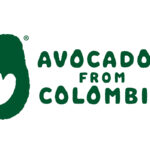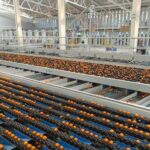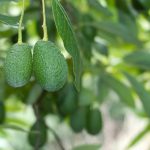Peruvian avocado industry assures supplies despite challenges as volumes ramp up

The Peruvian avocado sector has assured that it will continue to supply global markets with high-quality fruit this season despite challenges related to the Covid-19 pandemic, an industry representative has said.
Daniel Bustamante, chairman of the Peruvian Hass Avocado Growers' Association (ProHass), told FreshFruitPortal.com that while there have been some disruptions to the international market and domestic operations, there would not be any significant impact on the industry's exports.
His comments come as the industry prepares to ramp up volumes from mid-April.
"In mid-March the Peruvian Government reacted in a timely fashion on the Covid-19 situation, imposing measures like social restrictions and curfews to avoid further contamination," he said. "But agriculture is one of the few essential sectors of the economy that is still able to operate.
"Companies have been allowed to continue growing, packing and exporting, complying with all of the extraordinary protective measures for the labor force that the government has given us."
That said, he explained that those additional regulations had created inefficiencies and extra costs for the Peruvian avocado industry.
For example, it has become more expensive to transport workers as fewer people can be transported per vehicle, while social distancing rules mean the rate of harvest and packing is also affected. The number of workers has also been limited and they need to be sent home earlier than normal, limiting how much can be done per day.
"The sector has been reacting according and we have been able to comply with all the regulations. Companies can continue operating and are complying with their commitments to the markets with the additional protective measures," he said.
Bustamante said there had been a slight slowdown in exports, but he believed this was more related to companies learning about how to implement the new measures and also due to market uncertainty over recent weeks.
"But things are now on a better track in the market and the companies are learning how to work in this situation," he said.
He also noted that there had so far been few problems in terms of logistics in Peru, with enough truck drivers available and accommodating to the new schedules. The flow of containers from the ports to the packing houses and vice versa has also not been much of an issue, but the response times and efficiency of these operations have slowed down, he added.
The first exports of the Peruvian avocado season have been focused on the European market, and Bustamante said that shippers have seen good demand at the retail level over recent weeks.
"Avocados are top of consumers' lists. They are known for being very healthy," he said.
"Foodservice has been affected, in that sector we have already seen impacts. Demand went down drastically to almost zero, but now restaurants have been adapting to the new rules and new consumer behavior, and they've been strengthening their takeout orders.
"That has caused a slight reactivation of the sector, however not to the level we were at two years ago. But we do see strong retail demand for healthy products, especially avocado."
Season expectations for Peruvian avocado season
Following a year-on-year drop in export volumes last season of 17%, Peru is this year currently forecasting a 5% increase over the levels seen in 2018, when 336,000MT were exported.
But unlike 2018, when the volumes were greatly concentrated in a few weeks, Bustamante said that supplies would be a lot more consistent and spread out throughout the season. The peak weeks are expected to be from May through July.
"We have been exporting some small volumes from mid-March, but now in mid-April we are starting with the larger volumes," he said.
The Peruvian avocado season has started significantly earlier than normal over the last couple of seasons following heavy investment in early production areas in the north of the country. With those young orchards now maturing, the season gets underway several weeks earlier than before.
He said the increased early volumes were largely targeting the European and Asian markets, with shipments to the U.S. ramping up later in the season.
"Europe is still our main market, and we are now shipping there, as well as China and Japan, around five to six weeks earlier than in previous seasons," Bustamante said. "Those markets take fruit from Peru because it is well known to be at good maturity levels at that time of year."
The Chinese market, he added, is now starting to reactivate following the peak of the Covid-19 outbreak.
"That market is just gaining traction again and we would expect exports to grow. Hopefully we will see more movement," he said.
On the U.S. market, where Peru has also seen a rising share of the avocado market over recent years, Bustamante explained that Peruvian avocado supplies were an excellent complement to the domestic and Mexican supplies. Exports from Mexico are at the lowest point in the Northern Hemisphere summer months.
"We have nationwide coverage in the U.S., but we mainly go to the East Coast as there we're in a better position to compete with Mexico and California due to their high logistical costs," he said.
"The U.S. avocado market has been growing, and Peru has been taking a share of that growth."













































